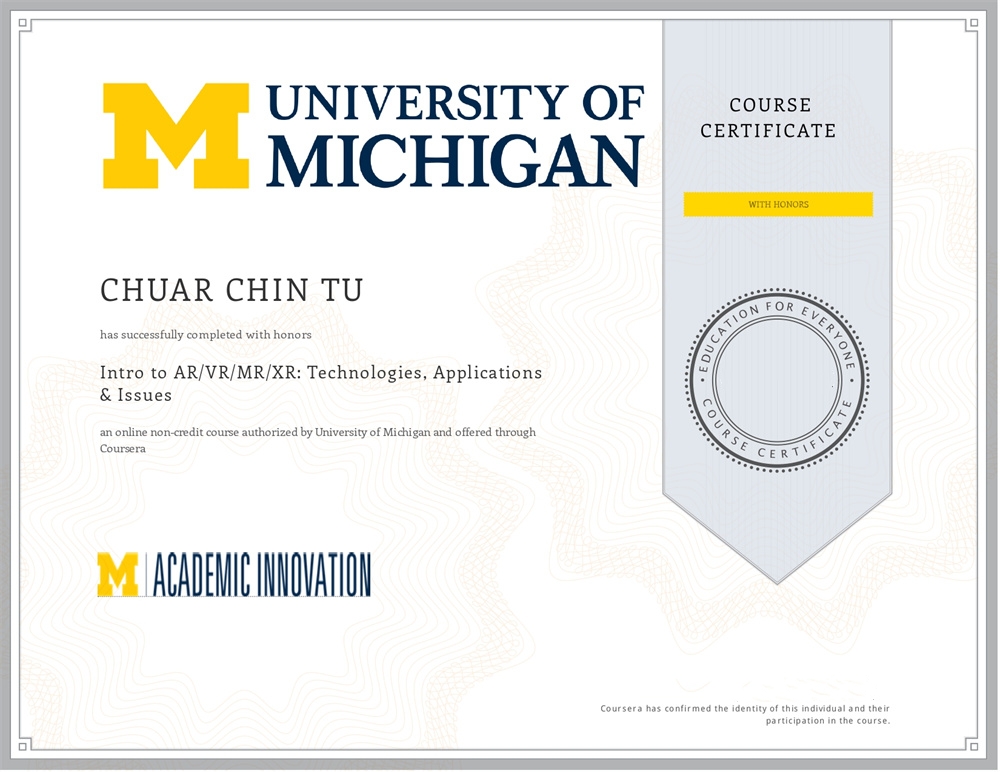Eric Chuar has completed the Intro to AR VR MR XR Technologies Applications – Issues with Honors for Personal & Professional Productivity and received a certificate from University of Michigan.
SCHOOL:
University of Michigan
GRADUATED:
2020
DURATION:
6 Months

Technologies Applications Skills Gained
Explain the conceptual and technological differences between VR, AR, MR, and XR.
Summarize the XR technology landscape in terms of platforms, devices, applications, and tools.
Understand strengths and weaknesses of VR and AR for new XR applications.
Devise a strategic plan to incorporate XR into new projects and initiatives.
Course Perspective
Just got done with the Intro to AR, VR, MR, XR Technologies Applications course, and let me tell you, it’s a whole new world! I’m the guy who likes to get in the trenches before even considering a course. Certificates are cool for Instagram, but the real win is in the skills you learn. Anyone serious about digital marketing or programming knows this.
Why did this course catch my eye? It’s all about the future—AR, VR, MR, XR—technologies that are shaping how we interact with the world. And given that I’m big on sharing what I learn, I couldn’t resist.
I’ve been in Malaysia and Singapore for a while, and I love these places. I’m not just in it for the money; I genuinely want to share knowledge and help people out. With a family and an adorable kiddo in the picture, that drive has only intensified.
So, what did the course offer?
- Conceptual and Technological Differences: This was the base layer. Understanding the nuances between VR, AR, MR, and XR is essential, and the course broke it down beautifully.
- XR Technology Landscape: This part was like a guided tour of the XR world. We looked at the platforms, devices, applications, and tools that are shaping this landscape. In digital marketing, this could be a game-changer.
- Strengths and Weaknesses: This section was about understanding where VR and AR shine and where they don’t. Like, AR is great for adding digital elements to the real world, but VR is more immersive. Knowing this helps in deciding which tech suits a particular project.
- Strategic Planning for XR: The course wrapped up with a blueprint for incorporating XR into new projects and initiatives. If you’re looking to get ahead, this is where the rubber meets the road.
All in all, the course was like a treasure map to the future. I can’t wait to put this knowledge to use, especially in my digital marketing projects. And you can bet I’ll be sharing all of this, because what’s the point of learning if you’re not going to share, right?
